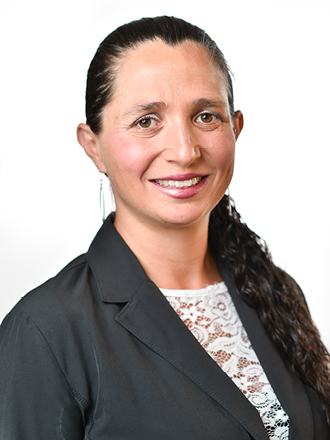Microbiology Session:
Thursday, September, 29th, 2022: 09:00 am
Chairs: Christin Koch and Hyun-Dong Chang
Second only to plants, bacteria make up a large part of earth’s biomass, critical for most biogeochemical cycles, turnover of matter, nutrition and health of all other living organisms. While molecular biological tools, such as high throughput sequencing, have helped us understand the vast genetic diversity of the microbiome, we know very little about function and phenotype of bacterial cells. Single cell-based analysis tools for the microbiota are still in their infancy but have gained more and more importance for the understanding of microbial interactions within microbial communities, with their environment and with their hosts in health and disease. This years’ microbiology session will highlight how novel approaches at single cell-based microbiota analyses can be leveraged for the analysis of microbial dynamics, interaction and function both in human health and environmental ecology.

Dynamics of gut microbe-host interactions
Rappaport Faculty of Medicine, Technion, Rappaport Technion Integrated Cancer Center
Abstract
In recent years, there has been a scientific awakening to the impact of the gut microbiota on host physiology. It is currently clear that the microbiota has profound effects on host physiology, yet studies on their causal effects, and functional molecules at play are still in their infancy. Microbiome studies, in the past two decades, have majorly focused on bacterial taxonomy with some functional attributes. We (Hajjo and Geva-Zatorsky, FEBS Letters, 2021) and others, have recently demonstrated major differences between different strains of the same species. We showed that different strains of the same species can modulate the host immune system distinctly. Our major interest is to characterize the molecular mechanisms underlying gut microbe-host interactions. To this end, we developed a method for combinatorial fluorescent labeling of anaerobic gut bacteria which enables mechanistic studies on consortia of gut bacteria and their interactions with the host, primarily by flow-cytometry (Hajjo et. al., Front. in Micro. 2021). In parallel, we recently characterized a phase-variable system in the gut bacteria, Bacteroides fragilis, which responds to the environment and dictates bacterial functionality (Ben-Assa, Coyne, et. al., Nucleic Acids Research, 2020, and unpublished data). Mechanistic studies on gut microbe-host interactions will enable deciphering causality and to identify nodes of intervention for targeted therapeutics.
Biosketch
Naama Geva-Zatorsky is an Assistant Professor at the Rappaport Technion Integrated Cancer Center. She completed her Ph.D., with honors in Systems-Biology, and her postdoctoral fellowship at Harvard, with Prof. Kasper, for which she received the Human Frontiers and EMBO fellowships, and the UNESCO-L’Oréal awards. In her lab, with her team, she is applying Systems-Biology, Microbiology and Immunology to study the functional interactions of the microbiota with our immune system. She is focused on mechanistic studies, including the analyzing the molecules involved and the dynamics of the gut microbiota as well as in gut microbe-host interactions. She recently was elected to the National Academy of Science, received the Johnson&Johnson WISTEM2D and Alon awards and was appointed as a CIFAR Humans&Microbiome fellow.

Noninvasive assessment of gut function using transcriptional recording sentinel cells
Department of Visceral Surgery and Medicine, Inselspital, Bern University Hospital, University of Bern, Switzerland
Abstract
Background: The mammalian immune system is heavily influenced by environmental factors such as diet and the intestinal microbiota. The latter provides key stimuli for proper immune system functioning and is a potent biomarker for diseases and treatment decisions. While commonly sampled from the stool, such measurements are poorly reflective of the luminal conditions at the site of host engagement. Noninvasive tools are required to report the environmental cues encountered through the gut that shape the immune system.
Methods: Here we used transcriptional recording sentinel cells that through a reverse transcriptase-Cas1–Cas2 complex record their own short-lived mRNA expression into long-lived DNA-based CRISPR arrays to report on gut function. We mono-colonized germ-free mice with E. coli sentinel cells and performed Record-seq on fecal samples to reconstruct their cellular histories as they passed along the gastrointestinal tract.
Results: Upon mono-colonization of mice, sentinel cells reported on diet, inflammation, and microbial interactions. Through transcriptome-scale information, Record-seq elucidated E. coli’s adaptations to intraluminal conditions including pH, oxygen levels, and ion availability. Unlike RNA-seq, Record-seq performed on stool samples retained information from proximal gut sections to non-invasively report on the luminal conditions in vivo. Using barcoded CRISPR arrays enabled multiplexed Record-seq in two isogenic E. coli strains coinhabiting the intestine to reveal compensatory responses of a single-gene mutant to competition with the WT.
Conclusions: Transcriptional recording sentinel cells noninvasively report on gut function and reveal environmental cues such as diet, inflammation, and microbial interactions.
Biosketch
Dr. Zimmermann obtained his PhD in immunology at the German Rheumatism Research Center Berlin in the lab of Andreas Radbruch and Hyun-Dong Chang investigating the contribution of various T helper cell subsets to the pathophysiology of inflammatory bowel disease. He then moved to the University of Bern where he currently develops new tools to study the mucosal immune system and its relationship to the intestinal microbiota in the lab of Andrew Macpherson. He is also interested in how gnotobiology – performing mouse experiments with defined microbiotas – can synergize with bacterial flow cytometry and cell sorting to improve the understanding of host–microbial mutualism.
Lisa Budzinski (Short Talk)
Deutsches Rheuma-Forschungszentrum Berlin, ein Leibniz-Institut, Schwiete Laboratory for Microbiota and Inflammation, Berlin, Germany
Single-cell bacterial phenotyping for disease classification and identification of disease-relevant microbiota populations
The intestinal microbiota is implicated in many chronic inflammatory diseases, however our understanding of its role for disease pathology and course is limited. To date, alterations of the microbial community, a hallmark for disease, is mainly described by 16S rRNA gene sequencing of bulk samples, which does not lead to conclusive identification of disease-relevant bacterial candidates. We developed an approach to analyze the human intestinal microbiota from stool samples on the single cell level and assess phenotypic properties of the bacteria by multi-parameter microbiota flow cytometry. We interrogate the coating of the intestinal microbiota with host immunoglobulins by isotype-specific staining to capture the immunological context of their recognition by the host. In addition, we characterize microbial surface sugars with specific plant agglutinins, potentially indicating metabolic conditions, adhesive ability and bacteria-host-crosstalk. The single-cell bacterial phenotyping allowed us to obtain distinct microbial signatures in patients with different chronic inflammatory diseases (Crohn´s disease, ulcerative colitis, IgG4-related disease, juvenile idiopathic arthritis, rheumatoid arthritis). Applying machine-learning, we can delineate phenotypic clusters that allow the robust classification of disease entities. We demonstrate that multi-parametric microbiota flow cytometry of stool samples can be used for disease diagnosis and could have potential use for disease-monitoring but also to identify intestinal microbial communities specific for certain diseases and likely to play a role in disease pathogenesis.
Shuang Li (Short Talk)
Helmholtz Centre for Environmental Research, Leipzig, Germany
Stabilization of complex microbial communities revealed by single-cell analysis
Building and changing a microbiome at will and maintaining it over hundreds of generations has so far proven challenging. Despite best efforts, complex microbiomes appear to be susceptible to large stochastic fluctuations. Current capabilities to assemble and control stable complex microbiomes are limited. Here, we propose a looped mass transfer design that stabilizes microbiomes over long periods of time. Five local microbiomes were continuously grown in parallel for over 114 generations and connected by a loop to a regional pool. Mass transfer rates were altered and microbiome dynamics were monitored using quantitative high-throughput flow cytometry and taxonomic sequencing of whole communities and sorted subcommunities. Increased mass transfer rates reduced local and temporal variation in microbiome assembly, did not affect functions, and overcame stochasticity, with all microbiomes exhibiting high constancy and increasing resistance. Mass transfer synchronized the structures of the five local microbiomes and nestedness of certain cell types was eminent. Mass transfer increased cell number and thus decreased net growth rates μ’. Subsets of cells that did not show net growth μ’SCx were rescued by the regional pool R and thus remained part of the microbiome. The loop in mass transfer ensured the survival of cells that would otherwise go extinct, even if they did not grow in all local microbiomes or grew more slowly than the actual dilution rate D would allow. The rescue effect, known from metacommunity theory, was the main stabilizing mechanism leading to synchrony and survival of subcommunities, despite differences in cell physiological properties, including growth rates.